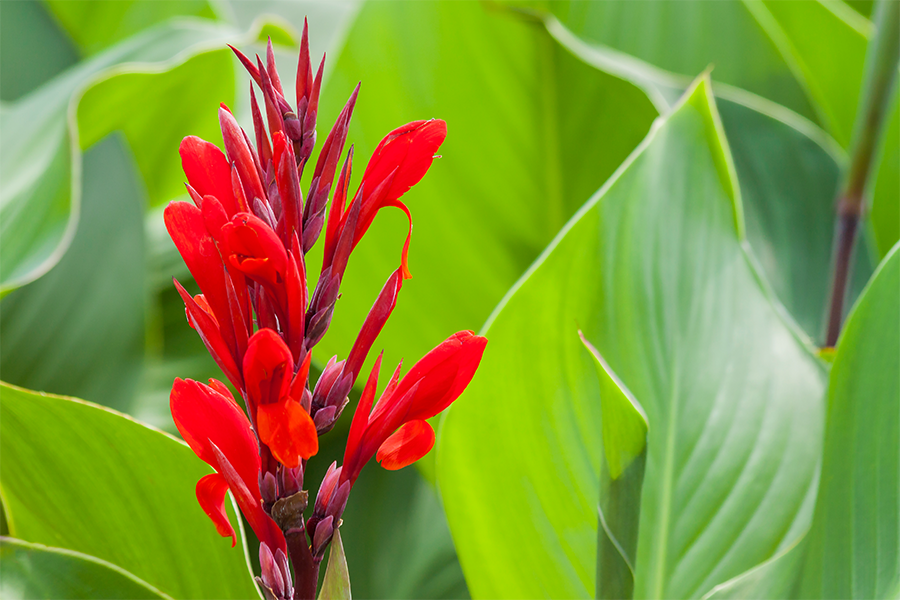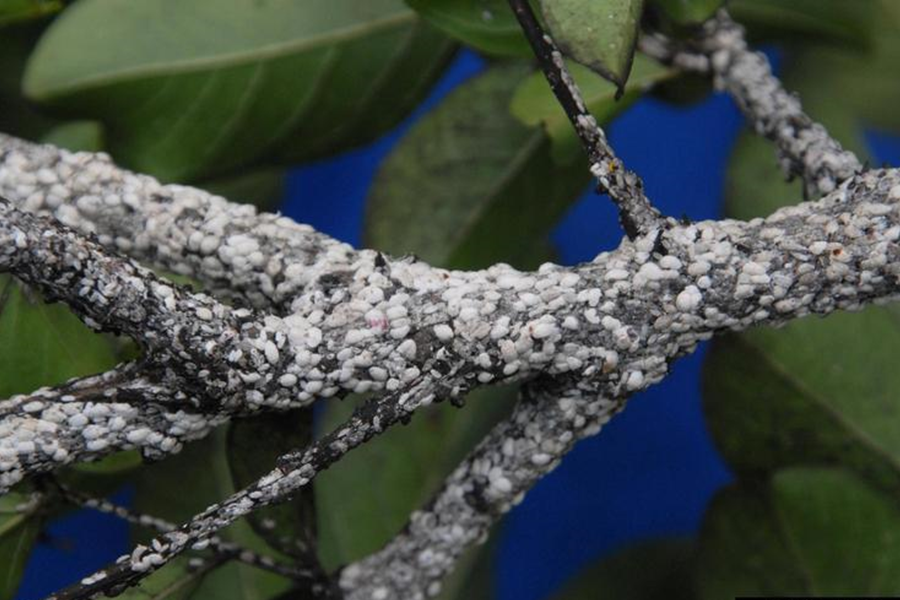Plant Pests and Diseases
-

An introduction to the larger canna leafroller, plus information on biology and management.
William G. Hudson and Shimat V. Joseph
|
-

The crape myrtle bark scale (CMBS) is an emerging threat to crape myrtle (Lagerstroemia spp.) in Georgia. As the name indicates, this scale pest attacks the bark of crape myrtle, the only known scale insect that infests crape myrtle bark. A native of Asia, CMBS was first confirmed in Dallas, Texas, in 2004. Since then, the pest has gradually expanded its range to the southeastern states. In Georgia, it was first confirmed in Coweta County in 2014. In 2019, CMBS were found infesting crape myrtles in an ornamental nursery in south Georgia. They can potentially spread in zones 6 to 9.
William G. Hudson and Shimat V. Joseph
|
-

2019 plant disease losses, including control costs, amounted to an estimated $832 million. The value of the cropsused in this estimate was approximately $6.64 billion, resulting in a 13.3% relative disease loss across all crops included in this summary. The estimated values for most crops used to compute these disease losses are summarized in the UGA Center for Agribusiness & Economic Development, 2019 Georgia Farm Gate Value Report (AR-20-01). Some estimates for fruits, ornamentals, and turf rely on the specialist’s knowledge of the industry and industry sources for information.
Elizabeth L. Little
|
-

Stubby-root nematodes, Paratrichodorus minor, are considered an important pest of onions in Georgia. Low to high population densities of this nematode were observed in multiple fields in the Vidalia area causing damage to sweet onions. The most obvious aboveground symptoms of stubby-root nematode nematode infection are poor, stunted growth of onion seedlings. Stubby-root nematodes have a wide host range, including sugar beets, potatoes, corn, cotton, peanuts, wheat, onions, grasses and some other vegetable crops that are commonly grown in Georgia. Fallow crop rotation with non-host cover crops and treating seedbeds with suitable fumigant and non-fumigant nematicides are effective controls for this pest.
Christopher Todd Tyson, Aubrey Shirley, and Abolfazl Hajihassani
|
-

Root-knot nematodes are highly adaptable, obligate plant parasites (parasites that cannot reach adulthood without a host) that attack plant roots and establish a prolonged relationship with their hosts. There are three common species of root-knot nematodes known to parasitize watermelon in the U.S.: the southern root-knot, M. incognita, the peanut root-knot, M. arenaria, and the Javanese root-knot, M. javanica. The southern root-knot nematode is ranked first in terms of negative impact on watermelon production, particularly in warm temperate climates. Many watermelon fields in Georgia are infested with one or more species of root-knot nematodes.
Josiah Matai Koki Marquez, Fereidoun Forghani, and Abolfazl Hajihassani
|
-

2017 plant disease losses, including control costs, amounted to an estimated $936 million. The value of the crops used in this estimate was approximately $6,634 million, resulting in a 14.1% relative disease loss across all crops included in this summary. The estimated values for most crops used to compute these disease losses are summarized in the 2017 Georgia Farm Gate Value Report (AR-18-01) published by the UGA Center for Agribusiness and Economic Development. Some estimates for fruits, ornamentals, and turf rely on specialists’ knowledge of the industry and industry sources for information.
Jason H. Brock, Elizabeth L. Little, Phillip M. Brannen, Ganpati Jagdale, and Bhabesh Dutta
|
-

In 2016, Georgia’s plant disease losses, including control costs, amounted to an estimated $821 million. The value of the crops used in this estimate was approximately $6,596 million, resulting in a 12.8% relative disease loss across all crops included in this summary. The estimated values for most crops used to compute these disease losses are summarized in the UGA Center for Agribusiness and Economic Development’s 2016 Georgia Farm Gate Value Report (AR-17-01). Some estimates for fruits, ornamentals, and turf rely on specialists’ knowledge of the industry and industry sources for information.
Elizabeth L. Little
|
-

Soil fumigants alone or in combination with nonfumigant nematicides can provide vegetable growers effective and reliable control of plant-parasitic nematodes, profitable yield and product quality, and increased profits. Treating soil with fumigant nematicides has been very beneficial to vegetable growers in Georgia, but environmental concerns may restrict the broad usage of these products. Telone II has been an important nematode management tool for the field production of many vegetable crops. Vegetable growers will have very limited options if soil fumigants, in particular Telone II, are no longer available. The development of new effective and environmentally safe nonfumigant nematicides has reduced the dependency on fumigant nematicides, but the application of fumigants still has great value for growers in Georgia.
Abolfazl Hajihassani
|
-

Currently, European gypsy moth is one of the top quarantine species in the United States. Thanks to the efforts of the U.S. Forest Service and other organizations, such as the Slow the Spread Foundation, the spread of European gypsy moth has slowed dramatically and has yet to become established in Georgia. However, residents and commercial landscape/nursery persons should continually monitor for the pest. This review is intended to provide an introduction to European gypsy moth for residents and green industry professionals in the Southeast. It provides information on European gypsy moth identification, life cycle, means of spread, methods of control, and what can be expected in the Southeast if/when the insect arrives and becomes established.
John M. Ruter, Matthew Chappell, and Alan C Peper
|